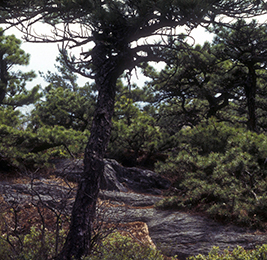
Writing in Conservation Biology in March, they estimated the local net impacts of private and public land conservation from 1990 to 2015 in 1,500 cities and towns that are home to nearly all of New England’s population.
“Job growth was modest but significant,” says Sims, “and the effect was amplified in more rural areas.” To illustrate, she described a hypothetical town of 50,000 employed people. On average, increasing land protection by 50 percent led to employment for 750 additional citizens in the next five years.
Previous U.S. studies have mainly focused on the American West, and on projects such as the creation of national parks. “We’ve now shown that when private landowners protect their land, the benefits extend beyond nature and into their communities,” says Harvard’s Jonathan Thompson, a colleague of Sims on the project.